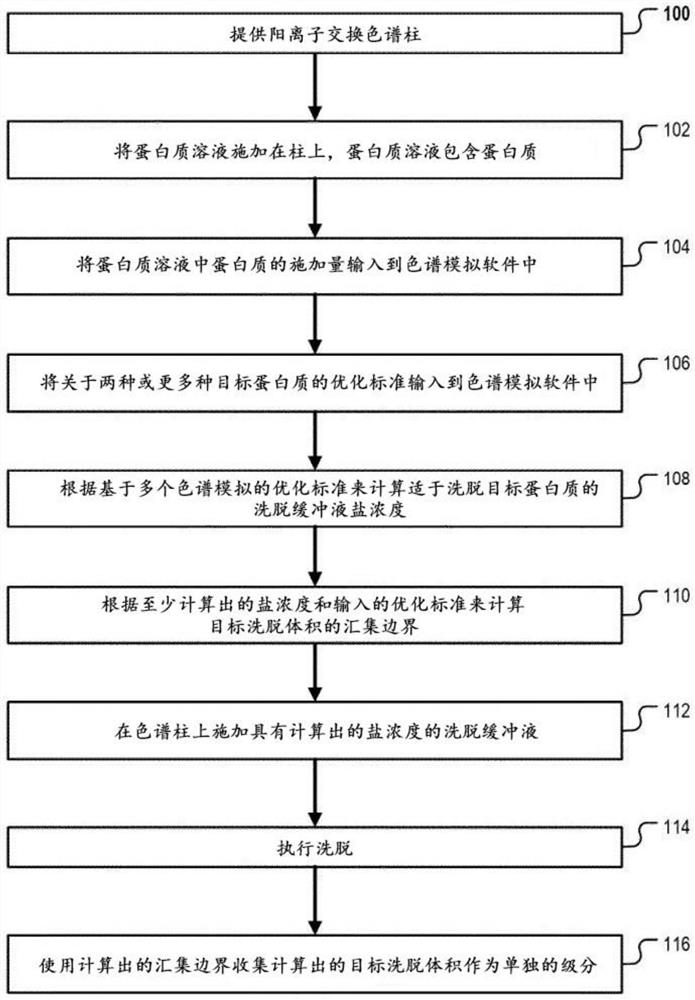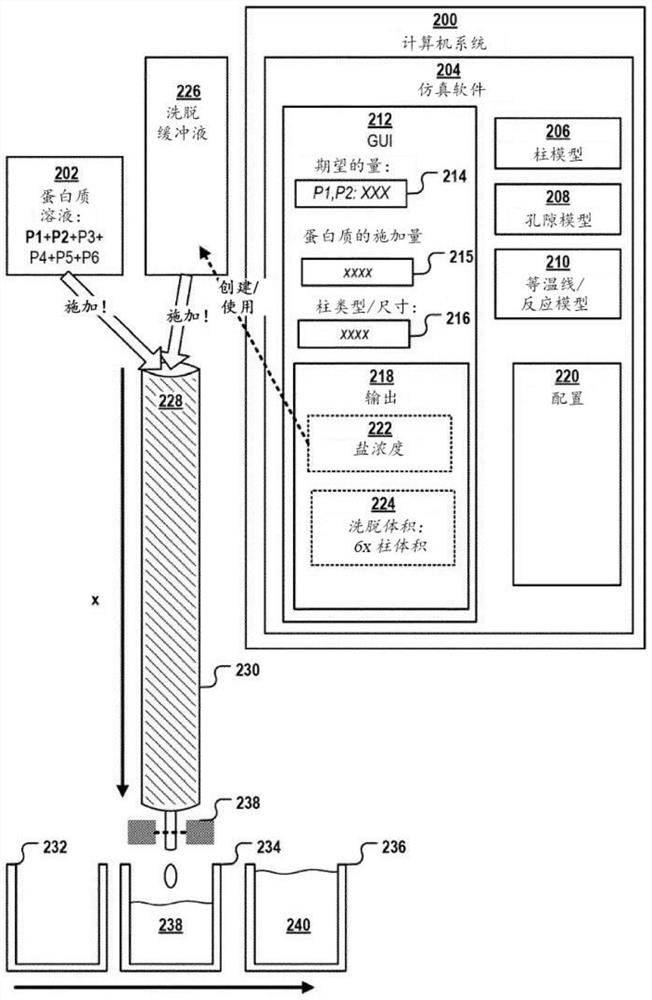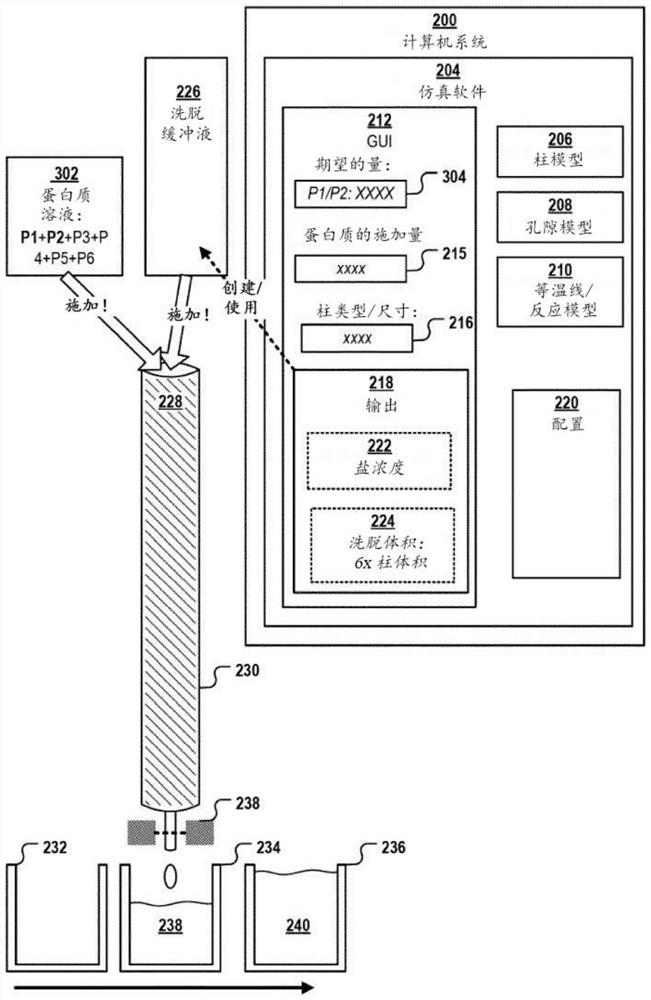Cation chromatography using predicted elution buffer salt concentration
A technology of elution buffer and salt concentration, applied in the field of chromatography and cation chromatography
- Summary
- Abstract
- Description
- Claims
- Application Information
AI Technical Summary
Problems solved by technology
Method used
Image
Examples
Embodiment Construction
[0219] figure 1 A flow diagram of a chromatography method according to an embodiment of the invention is depicted.
[0220] This method can be used to obtain a target elution volume comprising a desired absolute or relative amount and / or purity of two or more target proteins. For example, the method may be performed to obtain target protein P1 and target protein P2 respectively in a certain concentration or amount, wherein target protein P1 preferably has the lowest purity within the target elution volume. Additionally or alternatively, the method can be used to obtain a target elution volume comprising a desired ratio of two or more target proteins.
[0221] In a first step 100, the method includes providing, for example, figure 2 and image 3 The cation exchange column depicted in 230. There are a large number of commercially available chromatography resin materials that can be used to manufacture self-packed as well as prepacked columns.
[0222] For example, Poros ...
PUM
| Property | Measurement | Unit |
|---|---|---|
| diameter | aaaaa | aaaaa |
| diameter | aaaaa | aaaaa |
Abstract
Description
Claims
Application Information
 Login to View More
Login to View More - R&D
- Intellectual Property
- Life Sciences
- Materials
- Tech Scout
- Unparalleled Data Quality
- Higher Quality Content
- 60% Fewer Hallucinations
Browse by: Latest US Patents, China's latest patents, Technical Efficacy Thesaurus, Application Domain, Technology Topic, Popular Technical Reports.
© 2025 PatSnap. All rights reserved.Legal|Privacy policy|Modern Slavery Act Transparency Statement|Sitemap|About US| Contact US: help@patsnap.com



